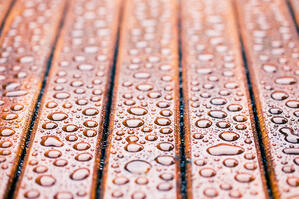 Recently, we made a post about how to measure moisture in wood for DIY enthusiasts. Today, let’s dig a little deeper into the practice with a few tips that DIY enthusiasts can use for measuring humidity in hardwood floors.
Recently, we made a post about how to measure moisture in wood for DIY enthusiasts. Today, let’s dig a little deeper into the practice with a few tips that DIY enthusiasts can use for measuring humidity in hardwood floors.
Why Measuring Humidity in Hardwood Floors is Important
As you may know from some of our previous posts, excess moisture in wood can cause numerous problems for hardwood floors, including:
- Buckling;
- Cupping;
- Warping; and
- Mold growth
Just to name a few of the potential issues.
Preventing these problems often requires detailed information on the moisture conditions inside of your hardwood floors. With this in mind, here are some tips for measuring moisture in flooring materials that do-it-yourselfers can use:
1: Keep Hardwood Flooring Materials Stored in Conditions Similar to Where They’ll Be Installed
Wood is a hygroscopic material, meaning that it absorbs and bleeds moisture until it reaches an equilibrium with its surrounding environment. Because of this, it’s important to keep your hardwood flooring materials stored in an area that’s similar to the area you’ll be installing the floors.
Why?
If you store hardwood flooring in an area that is significantly drier or wetter than where the flooring will be installed, it can affect the validity of your moisture readings.
For example, if you keep your hardwood flooring materials in a warm, dry room but install it into a cool, humid room, the wood will initially read as being dry when you test it, but it will soon start absorbing moisture from the air in the room, causing the wood’s %MC rise after the fact.
This is why it’s important to keep the storage conditions of your hardwood flooring materials in mind when you’re measuring humidity in these materials.
2: Don’t Forget to Check Subfloor Materials
Many DIY enthusiasts remember to thoroughly check the hardwood floors they’re installing, only to be surprised when problems still happen because of excess moisture in the subfloor materials.
In some tear-out and replace jobs, this might not be a huge issue, as the subfloor is probably already dry. But, it’s better to be safe than sorry, so checking the subfloor is important to do.
Whether your subfloor is made of plywood, concrete, wood chip OSB (oriented strand board), or planks, any excess moisture in the subfloor can bleed into the flooring above, creating problems for your hardwood flooring materials.
3: Check the Wood Species of the Hardwood Flooring You’re Installing
Moisture meters can be wonderful tools for rapidly checking the moisture content of hardwood flooring materials. However, it’s important to keep in mind that not all types of wood are the same.
Because different species of wood have different density and electrical conductivity properties, two different kinds of wood might return very different reading results when checked with a moisture meter, even if their actual moisture content percentage is identical.
To make sure that you’re getting the right reading results, be sure to check the species of hardwood you’re testing and check your moisture meter manufacturer’s species correction table for the reading adjustment.
This way, you’ll be able to avoid overestimating or underestimating the humidity in your hardwood flooring materials.
4: Pick the Right Moisture Meter for the Job
There are a lot of different moisture meters on the market, each with different bells and whistles attached.
For example, some moisture meters have a built-in species correction function that does the reading adjustment for you; all you have to do is program in which species of wood you’re testing and the meter does the rest when you test. Other meters might have temperature corrections, data storage, and many other features designed for ease of use.
However, odds are that you won’t need too many special functions in your moisture meter. What’s most important is the ability to make sure that the readings you get from your meter are accurate, and that the meter is rugged enough to keep working even after the occasional mishap.
This is why it’s important to use moisture meters that have been tested using proven, traceable testing standards from reputable manufacturers that stand behind their products.
When looking for a moisture meter for flooring, check the manufacturer’s warranty. Is it clear, concise, and easy to understand? Or, is it a long, confusing mass of double-talk?
A plainly-worded warranty that fairly establishes what is and isn’t covered demonstrates how much confidence the manufacturer has in their product. A wordy warranty full of excessive legal jargon can be a warning sign that the manufacturer will do everything possible to avoid fulfilling their obligations, and that they have no faith in their product.
So, when shopping around for a moisture meter to use on your hardwood floors, be sure to check not just the price and features, but the reliability of the manufacturer so that you can have a tool that will meet your needs.
These are just a few tips that can help you when you’re getting ready to measure moisture in hardwood floors, or just about any other building materials you might come across on your next DIY project.
Hopefully, these tips will help you on your next project.

Comments